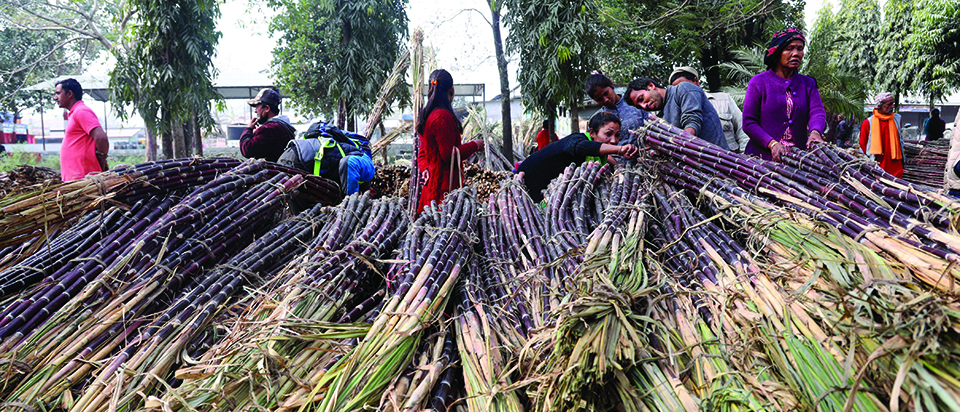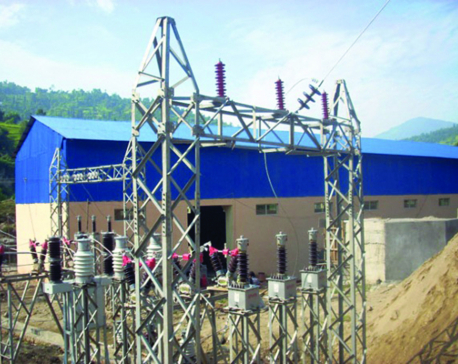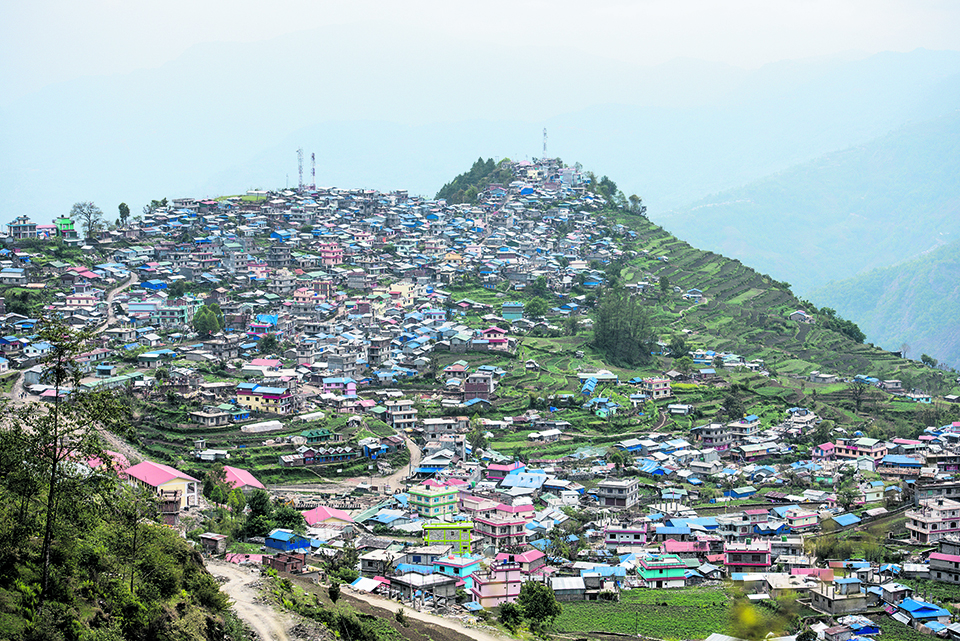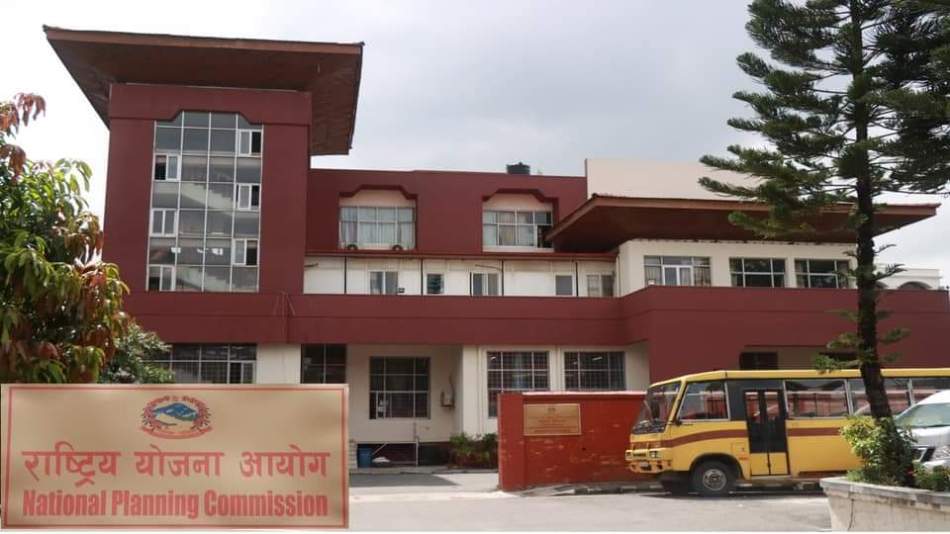
OR
Sugar industries at crossroads
Published On: September 10, 2018 01:00 AM NPT By: Krishna Sharma and Maheshwar Giri


Krishna Sharma and Maheshwar Giri
Sharma is a consultant at National Institute of Public Finance and Policy, New Delhi and Giri a PhD student at South Asian University, New Delhinews@myrepublica.com
More from Author
Focusing on measure such as increasing import duty may not solve the crisis Nepal’s sugar industries are facing at the moment
Sugarcane farmers in Nawalparasi district have been waiting for years to receive payments from sugar mills. Every time they ask for the payment, the mills express inability to pay for different reasons. Farmers in this area have decided not to cultivate sugarcane for the next agricultural season owing to constant refusal from the sugar mills to pay. It’s not the story of a village alone. Sugarcane farmers across the country are bearing the brunt of payment delay from the sugar mills.
Sugarcane farming has been declining over the past few years. The cultivation area has shrunk by more than 6000 ha between fiscal year 2013 and 2017 and production has dropped from 3.3 to 2.6 million tons during the same period. This decline indicates that the sugarcane farmers may have been increasingly switching to other crops following the perennial ‘price-conflict’ with domestic sugar mills and delay in payments.
Falling production
It is obvious that domestic sugar production will fall because of shrinking sugarcane production. There has been a steady decline in the production of sugar despite its rising demand in the market. The annual demand of 350,000 tons and production of approximately 250,000 tons creates a huge gap of 100,000 tons, which can be fulfilled only through imports.
Nepali sugar market comprises 30 percent of imported sugar mainly from India, Pakistan, and Brazil. Declining sugarcane production gives rise to the inflow of imported sugar in Nepal’s market adding to our already worrisome trade deficit.
It is not that Nepal’s sugarcane production is not sufficient to meet the domestic demand. Given the favorable climate, Nepal has tremendous potentials to produce sugarcane to suffice our need in Nepal’s market. Currently, it has been reported that a sugar mill in the country consumes only 50 percent of the total sugarcane produced. Some farmers even complain of not being able to sell their sugarcane to the mill. Only 10 of the total 13 sugar mills are smoothly operating in Nepal at the moment.
One of the reasons is reluctance on the part of sugar mills to make timely payments to the farmers. This has demotivated the farmers. The recent Home Ministry directive to the sugar mills to prepare a reliable payment plan has not been effective enough.
Resolving the problems
We cannot resolve ongoing crisis in sugar industry without developing an understanding among three players: sugarcane farmers, mill owners and declining sugar price in the global market.
Due to the import of cheaper sugar from India and other countries, Nepali producers claim they are compelled to supply sugar at prices lower than production cost. Sugar factories are often reported to hoard the bulk of sugar because of their reluctance to sell at the existing market price which they claim is lower than production cost.
In 2017, out of the 178,000 tons of sugar produced in the country, Nepal Sugar Mills Association (NSMA) reported that only 54,000 tons were sold, implying a cut in sugar production in coming days. This will have precarious impact on sugarcane farmers.
Sugar mill owners will continue to cite their inability to speed up payment to farmers till they are not able to generate enough revenue to clear the dues. To tackle this issue, the mill owners persuaded the government to augment the import duty on sugar. Then in April 2018, the government raised the import duty on the popular sweetener from 15 to 30 percent. This policy approach has serious implications from the perspective of consumer welfare as it is not fair on the part of Nepali consumers to pay more than half the price for a kilogram of sugar than their Indian counterparts. Plus this kind of policy approach encourages smuggling of sugars from India with whom Nepal shares an open border.
India has become a surplus sugar producer. Similarly, it has imposed a 100 percent duty on imports of raw and white sugar and limits on sugar sales by mills. The crisis that the sugar industry finds itself in India has been a result of excess production of sugar which has depressed prices resulting in a liquidity crunch for sugar mills. This has also led to pending sugarcane dues for farmers. With this phenomenon hovering around the neighboring country, the policy of increasing only the import duty may not be viable solution for Nepal.
India has set up the minimum floor price for sugarcane at NRs 440 per quintal, close to Nepal’s NRs 448. Similarly, it is reported that the factory gate price of sugar this fiscal stands at around NRs 50 per kg in Nepal which is again close to Indian price (NRs 46.4 per kg). Factory gate price is the production cost of per kg sugar, in which transportation cost, warehouse cost, and taxes are added.
Preliminary observation of these variables reveals that the lesser price of Indian sugar, in this case, may not be due to minimum support price (MSP) for sugarcane. The difference can be attributed to the state of technology barring economies of scale which is making Nepali sugar dearer.
It is high time to focus on the productivity and efficiency aspects of the existing sugar mills. If required, government needs to ease import of new technology in the sugar industry to enhance productivity and efficiency. If the ongoing crisis deepens, then we need to reconsider the policy related to sugarcane farming, and then consider switching the resources invested in them to other crops. While doing so, one needs to assess the detail cost-benefit analysis keeping in mind all the global economic scenario of the sugar industry. Hopefully, nobody wishes for this to happen at least for the time being.
Sugar-crisis is not peculiar to Nepal. This complex issue demands a holistic approach. Focusing on single measure such as increasing import duty may not solve the ongoing crisis. Scrutinizing the production process of sugar mills may help us gauge the bitter-sweet aspects of Nepal’s sugar industry.
Sharma is a consultant at National Institute of Public Finance and Policy, New Delhi and Giri a PhD student at South Asian University, New Delhi
You May Like This

Priorities for power
Nepal can substitute almost 50 percent of imports of petroleum products and coal, if the government accords priority to... Read More...

Putin’s declining popularity
Putin’s image as a steward of Russia’s greatness and a symbol of hope is slipping away. His tried-and-true tactic is... Read More...

Why privacy bill should be amended
The state has no right to control people’s freedom and liberties while introducing right to privacy laws. No law should... Read More...





Just In
- Emir of Qatar returns home after wrapping up state visit to Nepal
- Senate passes bill forcing TikTok’s parent company to sell or face ban, sends to Biden for signature
- PM Dahal hosts luncheon in honor of Qatari Emir
- Tata Sumo accident in Kavre leaves 10 injured, three in critical condition
- West Indies ‘A’ cricket team arrives in Nepal
- Barpark commemorates 2015's Gorkha Earthquake
- National Development Council meeting on Thursday to finalize 16th Plan
- Qatar Emir meets PM Dahal, bilateral agreement and MoUs signed between Nepal and Qatar



_20240423174443.jpg)










Leave A Comment